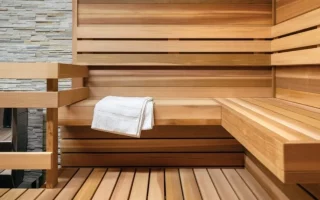A properly functioning bathroom fan is crucial for maintaining good indoor air quality and preventing moisture-related issues like mold and mildew. One common question homeowners have is whether a bathroom fan can vent directly into the ceiling. While it might seem convenient to vent a bathroom fan into the ceiling, there are several important considerations and potential consequences to keep in mind. This article will explore the practicality, legality, and best practices regarding venting a bathroom fan into the ceiling.
The Purpose of a Bathroom Fan

Moisture Control
Bathroom fans are primarily designed to remove excess moisture from the air, which is particularly important in a high-humidity environment like a bathroom. Excess moisture can lead to:
- Mold and Mildew Growth: High humidity levels create an ideal environment for mold and mildew to thrive, which can cause health issues and damage to building materials.
- Structural Damage: Persistent moisture can weaken building structures, leading to rot and deterioration over time.
- Unpleasant Odors: Stagnant moisture can result in unpleasant musty odors.
Improving Air Quality
In addition to controlling moisture, bathroom fans help improve indoor air quality by:
- Removing Odors: Bathroom fans quickly eliminate unpleasant odors, enhancing the comfort of the space.
- Ventilating Contaminants: Fans help expel volatile organic compounds (VOCs) and other pollutants commonly found in bathroom products.
The Dangers of Venting into the Ceiling
Moisture Accumulation
Venting a bathroom fan directly into the ceiling can lead to significant moisture problems:
- Condensation: Moist air vented into the ceiling can condense on cool surfaces, leading to water damage and mold growth.
- Insulation Damage: Moisture can saturate insulation materials, reducing their effectiveness and potentially causing them to deteriorate.
Mold and Mildew Growth
Moisture accumulation in the ceiling can create an environment conducive to mold and mildew growth:
- Health Risks: Mold spores can trigger respiratory issues, allergies, and other health problems.
- Structural Damage: Mold growth can weaken ceiling materials and compromise structural integrity.
Fire Hazard
Moisture in the ceiling can pose a fire hazard by affecting electrical components:
- Electrical Short Circuits: Water can cause electrical short circuits, increasing the risk of fire.
- Corrosion: Moisture can corrode electrical wiring and fixtures, further increasing fire risks.
Building Codes and Regulations
Compliance with Building Codes
Venting a bathroom fan into the ceiling is generally not compliant with building codes and regulations:
- Exhaust Requirements: Building codes typically require bathroom exhaust fans to vent to the exterior of the building to ensure proper removal of moisture and contaminants.
- Local Regulations: Local building codes may have specific requirements for bathroom ventilation that must be adhered to.
Insurance and Liability
Failing to comply with building codes can have legal and financial implications:
- Insurance Coverage: Non-compliance with building codes can void insurance coverage in the event of damage or loss related to improper ventilation.
- Liability: Homeowners may be held liable for damages or health issues resulting from improper ventilation practices.
Best Practices for Venting a Bathroom Fan
Exterior Venting Options
To ensure proper ventilation and compliance with building codes, consider the following exterior venting options:
- Roof Vent: Venting the bathroom fan through the roof is a common and effective method. This requires installing a roof vent cap and running ductwork from the fan to the vent.
- Wall Vent: Venting the fan through an exterior wall is another viable option. This involves cutting an opening in the wall and installing a vent cover.
- Soffit Vent: In some cases, it may be possible to vent the fan through the soffit (the underside of the roof overhang). However, this method requires careful planning to ensure proper airflow and prevent moisture from being drawn back into the attic.
Ductwork Considerations
Proper installation of ductwork is essential for effective bathroom fan ventilation:
- Duct Material: Use rigid or semi-rigid ductwork rather than flexible ductwork to minimize airflow resistance and prevent sagging.
- Insulation: Insulate ductwork to prevent condensation and heat loss, especially in unconditioned spaces like attics.
- Sealing: Seal all duct joints and connections with foil tape or mastic to prevent air leaks and ensure efficient airflow.
Fan Placement and Sizing
Selecting the right fan and placing it correctly can enhance ventilation effectiveness:
- Fan Size: Choose a fan with an appropriate CFM (cubic feet per minute) rating for the size of your bathroom. A general guideline is 1 CFM per square foot of bathroom space.
- Placement: Install the fan near the shower or tub to capture moisture at its source. Ensure the fan is centrally located to maximize airflow.
Steps for Proper Installation
Planning and Preparation
- Assessment: Evaluate the best route for venting the fan to the exterior, considering the layout of your home and any obstacles.
- Materials: Gather all necessary materials, including the fan, ductwork, vent cap, insulation, and sealing products.
Installation Process
- Mounting the Fan: Secure the fan housing to the ceiling joists according to the manufacturer’s instructions.
- Ductwork Installation: Run ductwork from the fan to the chosen exterior vent location, ensuring smooth and direct routing to minimize airflow resistance.
- Exterior Vent Installation: Cut an opening for the exterior vent and install the vent cap, securing it to the roof, wall, or soffit as appropriate.
- Sealing and Insulating: Seal all duct joints and connections, then insulate the ductwork to prevent condensation.
- Electrical Connections: Connect the fan to the electrical supply, following safety protocols and local codes.
- Testing: Test the fan to ensure it operates correctly and effectively removes moisture from the bathroom.




